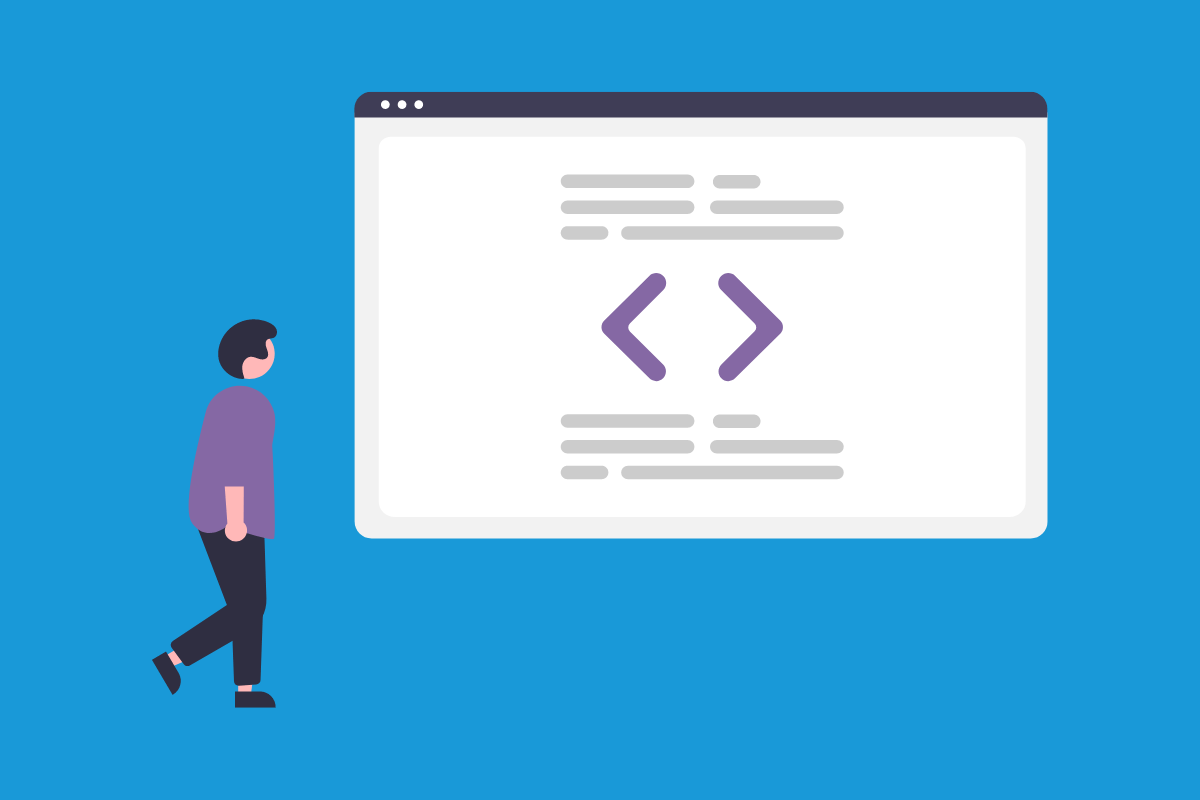Software development best practices shape the journey from the conception of an idea to the deployment and maintenance of a high-quality software product. At the core of custom software development lies the Software Development Life Cycle (SDLC), a systematic and structured framework guiding developers through the entire software development process.
Understanding the Software Development Life Cycle (SDLC)
The SDLC encapsulates the complete lifecycle of software, encompassing stages from initial ideation to deployment and subsequent maintenance. It serves as a blueprint for producing software architecture that not only meets customer expectations but is also delivered on time, within budget, and with the flexibility for future updates.
Phases of SDLC
- Planning: During the initial phase of software engineering, the development process involves defining the project’s scope, objectives, timelines, and resource requirements. It sets the foundation for a structured development process.
- Feasibility Study: A feasibility study evaluates the technical and financial viability of the project and ensures that the proposed solution aligns with the client’s needs and organisational capabilities.
- Design: The design phase involves creating the architectural blueprint, technical specifications, and user interface. It lays the groundwork for the actual development process.
- Implementation (Coding): During this phase, developers translate design specifications into actual code. Skilled developers write the code that will form the backbone of the software.
- Testing: Rigorous testing identifies and rectifies bugs, to ensure the software aligns with predefined requirements. It is a critical step in achieving a high-quality end product.
- Deployment: The software is released for use by end-users. It marks the culmination of the development process. This phase requires careful planning to ensure a smooth transition to the operational phase.
- Maintenance and Support: Post-deployment, developers address issues, update features, and provide ongoing support to enhance the software’s longevity and relevance.
SDLC software engineering models such as Waterfall, Agile, and Iterative, offer distinct approaches to these phases. The choice of a specific model depends on project-specific factors like size, complexity, and client requirements. Each model introduces unique methodologies for managing the software development lifecycle.
Effective Management of SDLC in Software Architecture
Effective management of the SDLC is imperative for successful project delivery. Each phase is aligned with best practices, to ensure a seamless transition from one stage to the next. The success of the SDLC requires:
- Rigorous planning,
- Thorough testing,
- Continuous communication among team members.
The Software Development Life Cycle is a guiding framework software developers use to produce top-tier software. It streamlines the development process and is used to maintain and update software to meet evolving needs.
Adhering to SDLC best practices is the cornerstone of achieving excellence in software architecture.
17 best software development practices in 2024
Best Software Development Practices apply to software developers, project managers, and stakeholders alike. Following these best practices is paramount to project success. It fosters code quality and meets the ever-growing expectations of end-users. Neglecting software best practices can be severe, including compromised software quality missed project deadlines and escalating development costs.
Let’s unravel the intricacies of these software project best practices and shed light on their indispensable role in steering projects towards triumph.
Understand the Relevance of Best Practices in Software Development
Software development best practices shape the landscape of modern software engineering. It influences everything from project efficiency to the quality of the end product:
1. Ensuring Code Quality
One of the primary objectives of adopting software development best practices is ultimately to maintain high code quality. By following established coding standards, best practices, and design principles, developers create functional, readable, maintainable, and error-free code.
2. Project Efficiency
Implementing best practices streamlines the development process, and fosters increased efficiency through:
- Clear documentation
- Collaborative coding workflows
- Adherence to coding standards
This efficiency translates into faster development cycles, timely project delivery, and cost-effectiveness.
3. Collaboration and Communication
Hiring dedicated developers with effective communication and collaboration skills in software development is important and these practices include:
- Code reviews
- Collaborative coding environments
- Consistent documentation
Clear communication ensures that all team members are on the same page, which contributes to a unified and coherent development process.
4. Bug Detection and Prevention
Software development practices, particularly testing methodologies and regular code reviews help teams identify and address bugs. Early bug detection prevents issues from escalating into larger problems during later stages of development. This proactive approach enhances the reliability of the software and minimizes the need for extensive debugging efforts.
5. Adaptability and Scalability
Software best practices promote adaptability and scalability in software projects. A well-structured codebase, modular design, and adherence to coding standards allow for easier integration of new features and functionalities to help keep pace with evolving user requirements and industry trends.
6. Project Success and Client Satisfaction
Software development best practices significantly contribute to overall project success and client satisfaction. High-quality software delivered on time and within budget enhances client confidence. Meeting or exceeding client expectations builds a positive reputation. It fosters long-term relationships and potential future collaborations.
7. Regulatory Compliance
Adhering to specific coding standards and practices is necessary for regulatory compliance. Following established guidelines ensures that software meets industry-specific standards and legal requirements. It reduces the risk of legal issues and facilitates a smoother regulatory approval process.
Software development practices are integral to the entire software development life cycle. They serve as a compass that guides developers towards robust, reliable, and scalable software solutions. The success of software development projects are driven by prioritising:
- code quality,
- project efficiency
- collaboration
- bug prevention
- adaptability
- Client satisfaction
How to Apply Software Development Best Practices
Understanding what the best practices involve is the start. Learning how to apply them is the key to success in every project:
Leverage Standard Code Practices
Standard code practices enhance collaboration and ensure a uniform approach within development teams. Adhering to coding standards creates a common language and set of conventions that streamline communication and comprehension among team members.
Established programming norms enable teams to glean insights from the seasoned coding community. It enriches developers’ understanding of best practices, coding conventions, and efficient problem-solving approaches. Mentorship allows developers to refine their coding prowess by learning from experienced practitioners.
Standard practices facilitate more efficient collaboration and sets a foundation for consistent and high-quality code development.
Emphasise Code Comprehensibility
Efficient communication within the realm of software development depends on the ability to render code easily understandable for all team members. Strategies that prioritize clarity and conciseness creates a collaborative environment. It enables developers to seamlessly interpret and build upon each other’s work.
Code comprehensibility involves creating a narrative within the code that transcends individual understanding.
Clean code in software development best practices streamlines the coding process and reduces the likelihood of errors. Clean, comprehensible code is a shared language among team members. It fosters a collective understanding of the project’s architecture and design.
Code comprehensibility ensures a smooth and collaborative development process. It minimizes ambiguity and maximises clarity. It promotes a culture where developers can seamlessly navigate through the codebase, understand each other’s contributions, and collaborate towards the shared goal of delivering high-quality, error-free software.
3. Adopt Efficient Coding Workflows
Efficient coding workflows create a harmonious balance between creating new code and refining existing code to cultivate an efficient development process. The key is to implement best practices that enhance productivity and facilitate the seamless integration of new features.
Here’s how you can adopt an efficient coding workflow:
- Prioritise Incremental Development: Break large tasks into smaller, more manageable units to allow for a focused and iterative approach. This makes it easier to track progress and identify potential issues early in the development process.
- Version Control: Version control systems like Git can help you manage code changes effectively. This allows multiple developers to collaborate simultaneously without conflicts, and it provides a safety net for rolling back changes if needed.
- Automated Testing: You can implement automated testing practices to catch errors early and ensure code reliability. This includes unit testing, integration testing, and other relevant testing methodologies.
- Continuous Integration/Continuous Deployment (CI/CD): Adopt CI/CD pipelines automate the process of integrating code changes and deploying applications. This accelerates the development lifecycle and reduces the chances of errors during deployment.
- Code Reviews: A robust code review process where team members regularly review each other’s code. This collaborative effort helps maintain code quality, ensures adherence to coding standards, and facilitates knowledge sharing among team members.
- Refactoring: Regularly revisit and refactor code to improve its structure, readability, and maintainability. This proactive approach prevents the accumulation of technical debt and enhances the overall health of the codebase.
- Effective Communication: Foster clear communication channels within the development team. This includes regular stand-up meetings, documentation, and collaboration tools to ensure everyone is on the same page regarding project goals and individual responsibilities.
- Agile Methodologies: Embrace agile methodologies like Scrum or Kanban. These methodologies emphasize flexibility, adaptability, and collaboration. It allows development teams to respond effectively to changing requirements and deliver incremental value.
Incorporating these practices into your coding workflows create an environment where developers can navigate the complexities of coding with precision, respond to changes efficiently, and deliver high-quality software in a timely manner.
5. Choose the Right Software Development Methodology
Consider the distinct characteristics of prevalent methodologies like Agile, Scrum, and Waterfall to help you make your choice based on project specifics. This will help align the methodology with the scope, goals, and team dynamics. This ensures a strategic approach that enhances collaboration, accelerates development, and aligns seamlessly with the unique demands of the software project.
6. Follow the YAGNI Principle
The “You Aren’t Gonna Need It” (YAGNI) principle is a fundamental concept in software development advocates for a pragmatic and streamlined approach to feature implementation. This principle is rooted in the idea of avoiding unnecessary complexities and functionalities in the development process. It encourages developers to prioritise and focus on essential features that directly align with the immediate project requirements.
YAGNI is a strategic guideline to prevent over-engineering and over-complicating a project. It helps developers refrain from implementing unnecessary features. Development efforts are concentrated on delivering functionalities that directly contribute to the project’s objectives.
Efficient organisation and planning are key aspects of the YAGNI principle. It prompts teams to evaluate whether a proposed feature is crucial for the current project phase or if it introduces unnecessary complexity. This evaluation ensures that development resources are utilised judiciously and avoids the allocation of time and effort to functionalities that may not provide immediate value.
YAGNI is particularly relevant in agile methodologies, where adaptability and responsiveness to changing project needs are essential. The YAGNI principle helps development teams to maintain a focus on the most critical aspects of the project. This enhances resource efficiency and optimises the development process for better outcomes. YAGNI encourages developers to strike a balance between addressing current requirements and avoiding premature optimisation or feature implementation that may not be essential for the project’s success.
7. Harness Efficiency through Application Frameworks
Application frameworks as software development tools offer a structured foundation for building applications. With pre-built modules, reusable code, and a set structure, they reduce the need to start from scratch. This expedites the development process and ensures consistency and scalability.
Application frameworks streamline development, enhance code quality, and facilitate maintenance. The most suitable framework for your project aligns with its requirements and ensures a smoother and more efficient development journey.
8. Select the Right Language and Framework
Choosing the right programming language and framework profoundly shapes the entire software development process. It requires thoughtful evaluation of factors such as:
- project requirements,
- scalability,
- and cross-platform compatibility
Selecting the appropriate language and framework ensures efficient coding, which streamlines the development process and makes it more adaptable.
9. Start with Clearly Defined Requirements
Software Requirements Specifications (SRSDs) guide developers through the project’s details. It is a common language that ensures that everyone in the development team and stakeholders understands the project’s goals. Effective SRSD generation techniques, such as collaborative workshops and user interviews, help developers to create a strong foundation for consistent project outcomes.
- Clear requirements help developers
- make smart decisions
- use resources wisely
- and deliver a product that meets everyone’s expectations.
Clear requirements lay the groundwork for project success and reduce the risks of confusion or changing expectations.]
10. Collaboration and Code Reviews
Team collaboration enhances creativity, problem-solving, and ultimately, a better end product. One vital aspect of this collaboration is code reviews.
Code reviews are peer reviews performed to ensure quality and adherence to coding standards. This collaborative process helps catch errors early and fosters knowledge sharing and continuous improvement.
Multiple sets of eyes on the code provide developers with valuable insights. It helps them identify potential issues, and collectively contribute to the overall quality of the software. Code reviews help maintain a high standard of code and promote a culture of teamwork and excellence within the development team.
11. Testing Best Practices
Testing best practices help guarantee the excellence of code quality in software development. Among these practices, unit testing takes a prominent role. It involves the meticulous examination of individual components of the software in isolation. This process is initiated before the actual coding begins. It allows developers to identify and rectify errors at an early stage of the development cycle.
The proactive approach prioritises unit tests before the coding phase yields multiple advantages. It serves as a preventive measure to ensure that potential issues are caught early and to prevent them from evolving into more complex problems during subsequent stages.
Unit testing as a best practice allows developers not only fortify the robustness of their software but also economise time and resources. This approach minimizes the need for extensive debugging later in the development process. It fosters a more efficient and streamlined software development lifecycle.
12. Apply Refactoring Frequently
Refactoring involves restructuring code to enhance its clarity and efficiency. Through refactoring, developers can ensure adaptability and flexibility in their codebase.
Applying refactoring techniques improves the maintainability of the software and it facilitates future enhancements. It’s a strategic approach that keeps the codebase agile, and makes it easier to navigate and modify as project requirements evolve. Refactoring as a best practice fosters a codebase that stands the test of time.
13. Maintain Staging and Production Environments
Separate staging and production environments ensure that changes can be thoroughly tested in a controlled staging environment before being deployed to the live production system. Developers can prevent potential issues from affecting the end-users by identifying and fixing bugs in the staging environment. This approach enhances the reliability and stability of the software, and contributes to a smoother and more secure deployment process. It’s a proactive measure to guarantee that only thoroughly tested and verified changes reach the production environment.
14. Use Version Control Systems
Version control systems, such as Git or GitHub, provide numerous benefits in software development. These systems enable simultaneous development as it allows multiple developers to work on different aspects of the project concurrently.
Additionally, version control mitigates conflicts by tracking changes made by each contributor to facilitate a seamless integration process. This ensures a collaborative and organized approach to development. It enhances overall project efficiency and reduces the likelihood of errors resulting from conflicting changes. Version control is indispensable for maintaining code integrity and fostering a well-coordinated development environment.
15. Utilise an Issue Tracker
Effectively using an issue tracker in software development helps identify and resolve problems systematically. Issue tracking tools enhance project management as it provides a centralised platform to document and address challenges. They enable teams to categorize, prioritize, and monitor issues to ensure a streamlined workflow.
Developers can use issue trackers to enhance collaboration, promptly address concerns, and maintain a clear overview of project progress.
16. Design Before Coding
Designing before coding is a foundational principle in software development, underscoring the need to envision the complete software application before commencing the coding process. This strategic approach is essential for several reasons. Firstly, it facilitates the early identification of potential issues and challenges that may arise during development, enabling proactive problem-solving.
By thoroughly outlining the software’s design in advance, developers gain a comprehensive understanding of the project’s structure and requirements. This clarity significantly diminishes the likelihood of misunderstandings or misalignments with project goals. A detailed design provides a structured and organised framework for developers to follow.
The proactive design-first approach reduces the risk of errors and streamlines the entire development lifecycle. This best practice contributes to heightened project efficiency, as it enables developers to deliver a high-quality software product that meets or exceeds client expectations.
17. Communication and Collaboration
By facilitating open and transparent communication as a software development best practice, development teams can:
align their efforts
share insights
and address challenges collaboratively.
Communication in software development is a proactive approach that enhances team cohesion, accelerates decision-making processes, and contributes to the overall success of agile methodologies in delivering high-quality software solutions. Clear communication ensures collaborative success in agile software development.
Future Trends in Software Engineering Practices
As technology advances and software development trends change, future trends in software engineering practices are marked by the increasing integration of automation and artificial intelligence (AI). This evolution aims to enhance coding standards and streamline development processes.
Automation tools assist developers in tasks like code analysis and testing, boosting efficiency and minimizing errors. AI provides intelligent insights, optimises algorithms, and automates routine tasks.
These trends enable software developers to stay at the forefront of technological advancements. It helps them harness the full potential of cutting-edge tools and methodologies for superior software engineering outcomes.
Software development best practices and adhering to established standards, collaboration, and strategic planning drive code quality and project success. It encourages the consistent implementation of these best practices in fostering a culture of excellence within software development teams.
As a software developer, committing to these principles ensures the timely delivery of high-quality software and adaptability to emerging challenges and advancements in software engineering.







